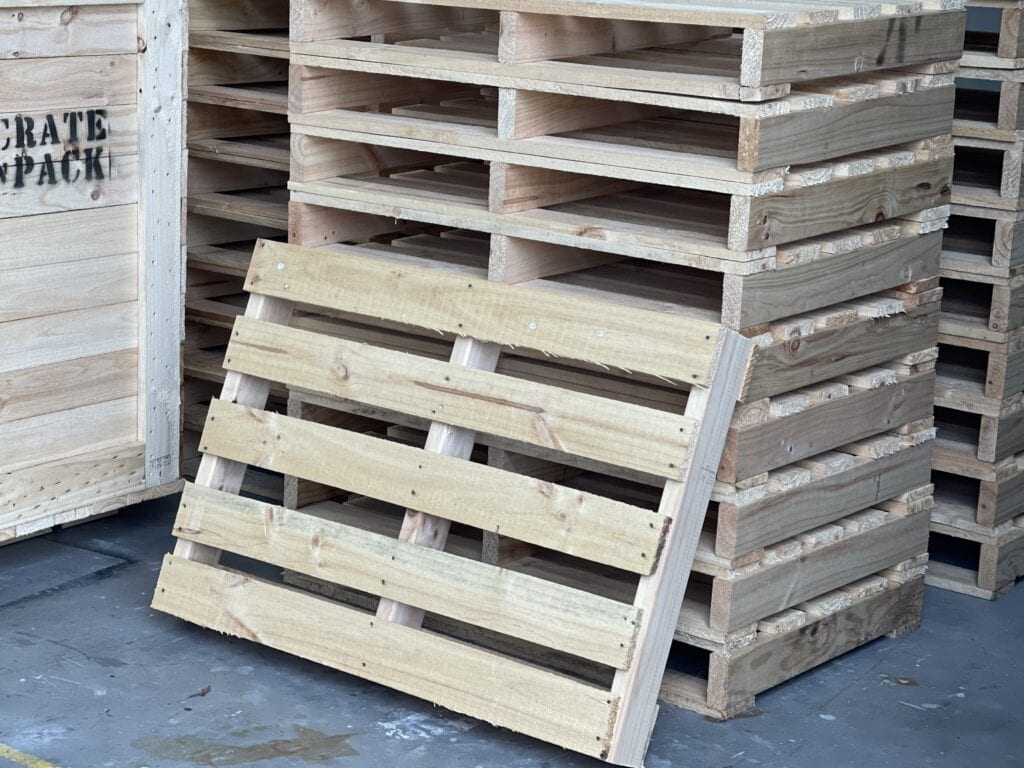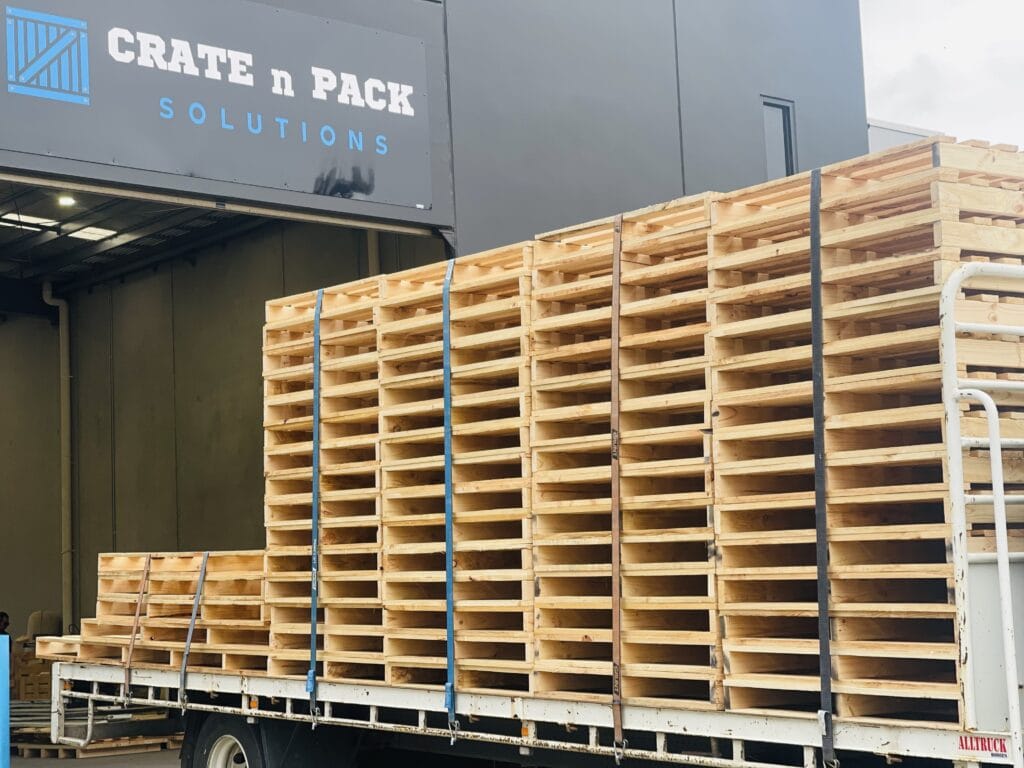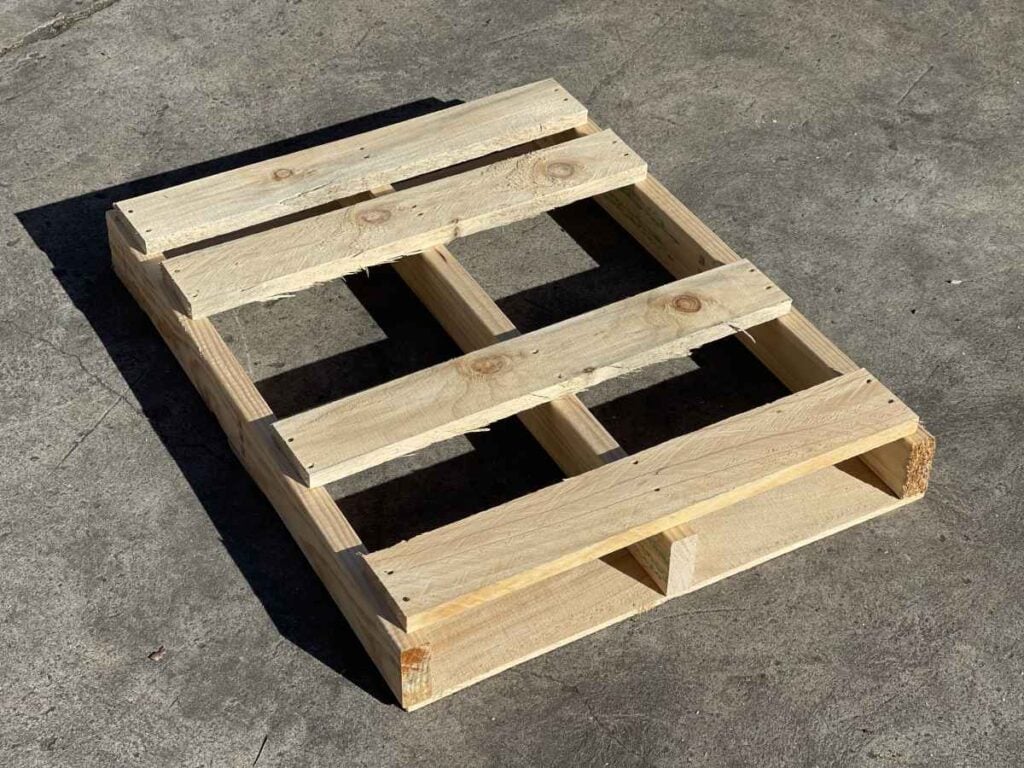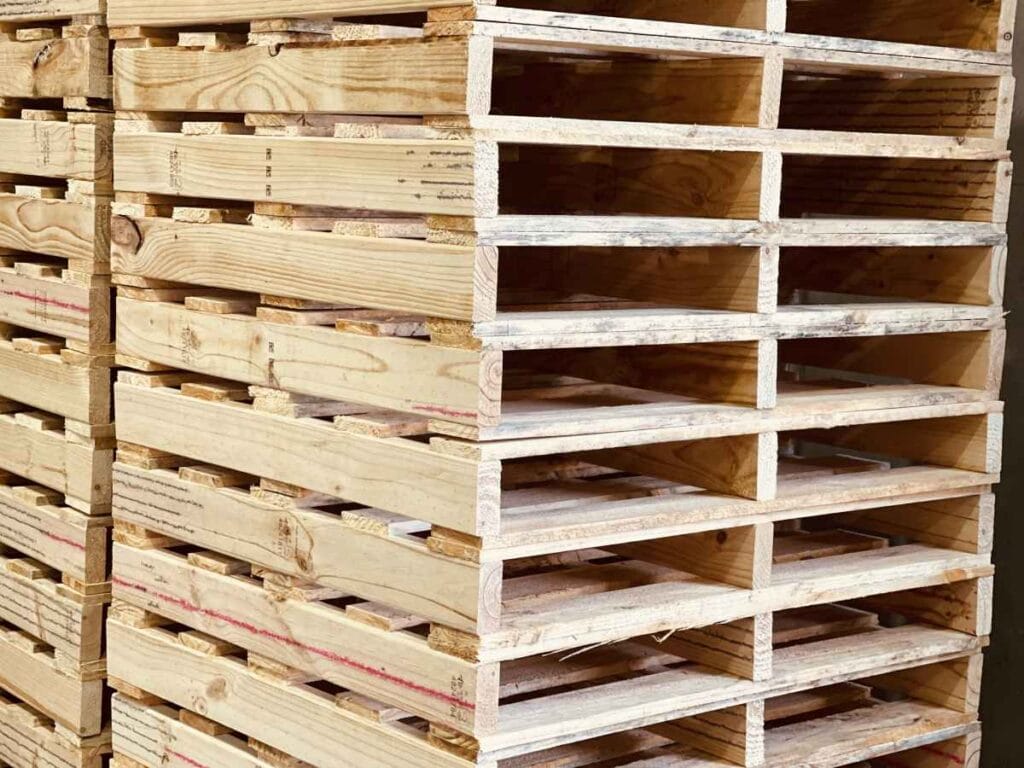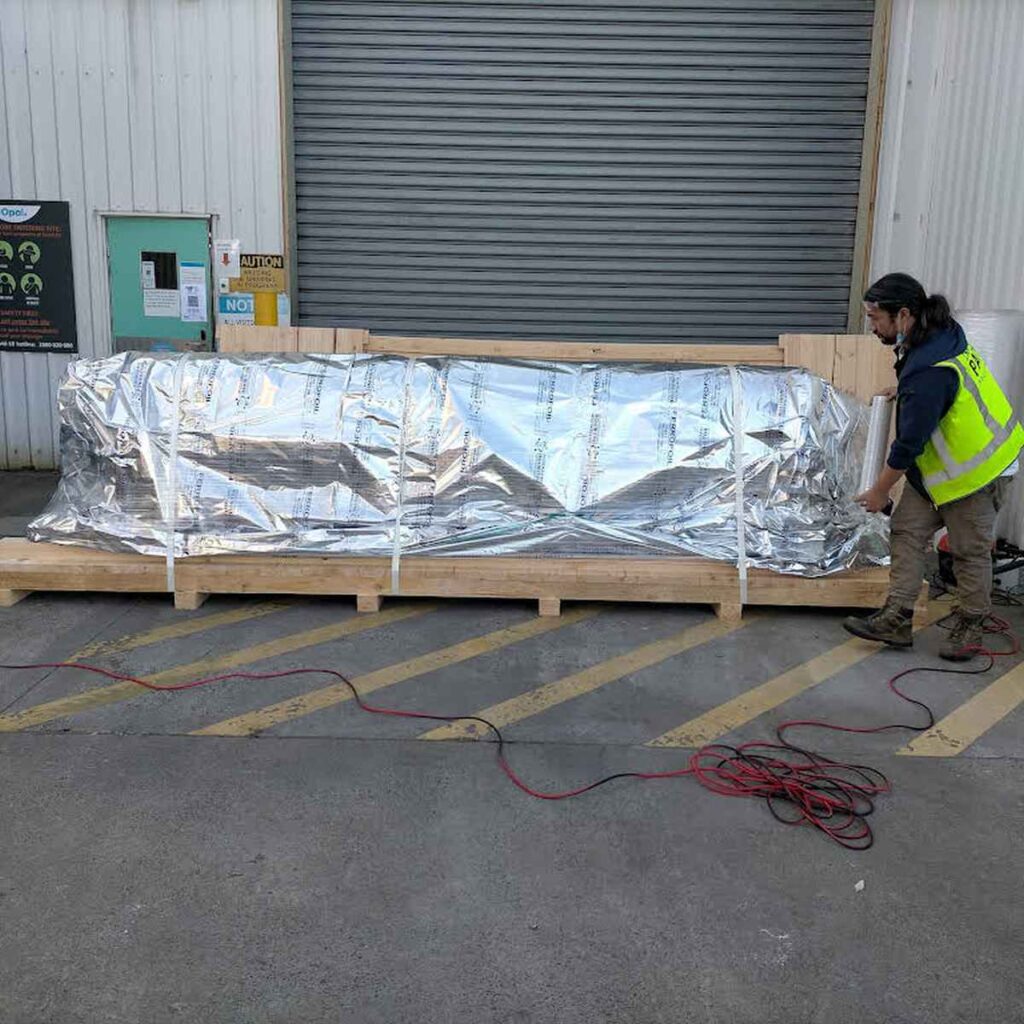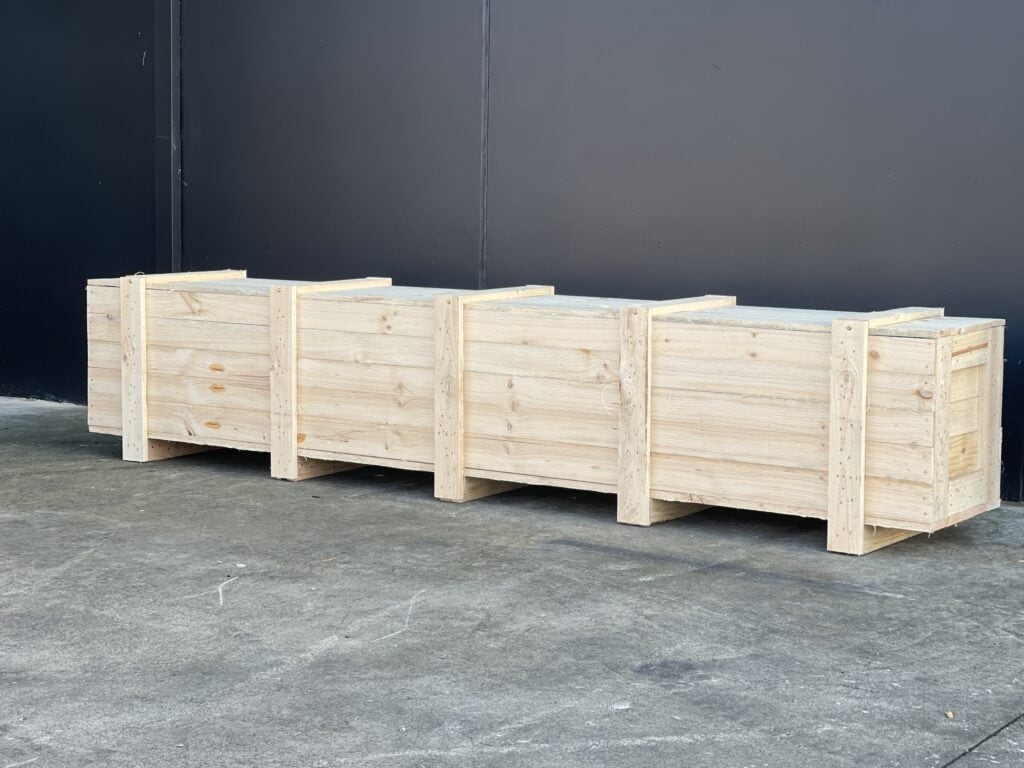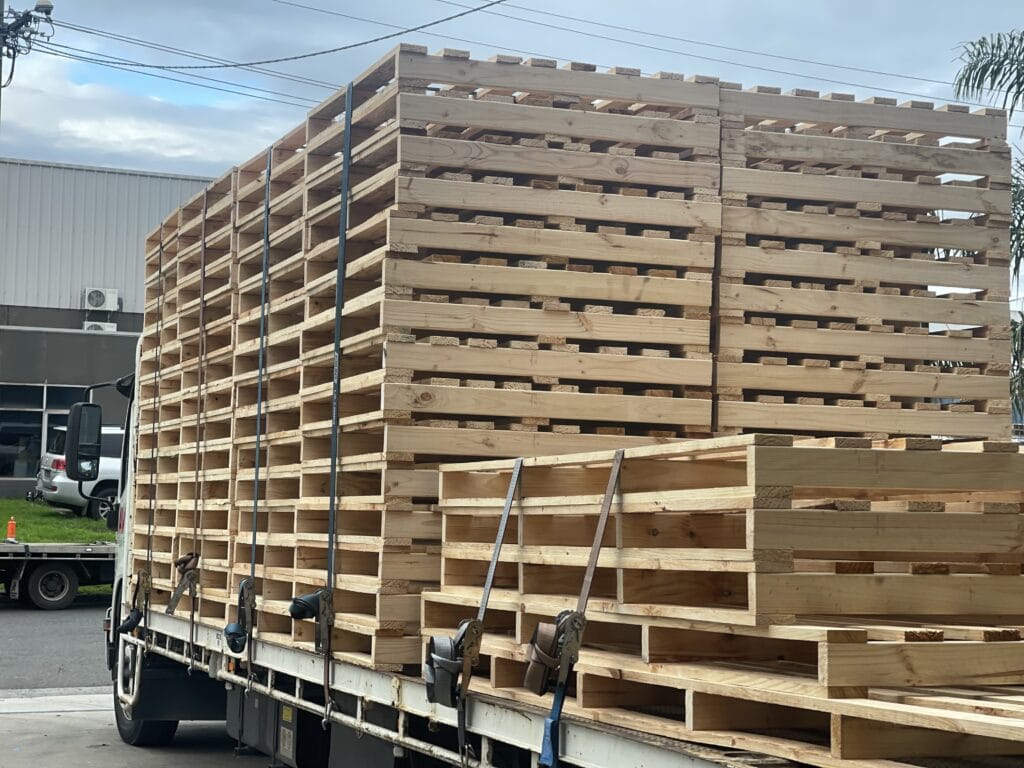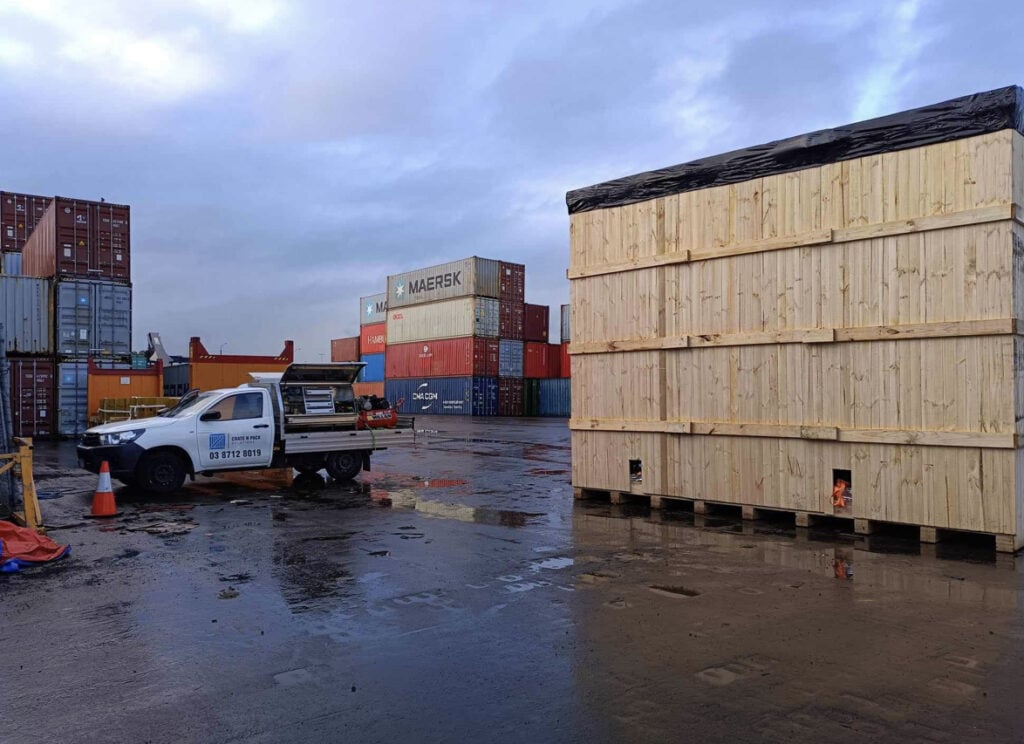If you're tired of replacing damaged pallets, you can avoid the problem by following the guidelines below. Finding strategies to reduce pallet damage is crucial if you want to maximise the useful life of your pallets. Because broken wooden shipping crates, pallets, and other forms of wooden packing can seriously disrupt production and delivery, this is also an essential consideration for supply chain management.
Damaged pallets are more expensive to repair than they appear at first glance. However, the condition of your pallets may also reflect poorly on your business.
There are a number of dangers that arise from using damaged wooden pallets. Damage to goods in transit or storage and potential harm to the workers' health who must move them are risks associated with broken pallets.
When you don't take precautions to prevent pallet damage, you put the safety of your customer or end-user at risk. Some preventative measures against pallet damage below.
Understanding The Impact Of Pallet Damage
Damage to shipping pallets can have serious repercussions in the logistics and warehousing industries. Pallets are crucial to the success of any supply chain, as their use is essential to the movement of goods from one location to another. It can have far-reaching consequences for businesses when pallets are compromised due to damage.
To begin, pallets guarantee the secure and steady movement of the items they support. When broken, they can't do their job and keep everything stable on the road. This instability not only raises the possibility that the goods will be damaged while in transit but also creates potential safety issues for the employees who will be handling the pallets.
Second, if a pallet gets damaged, it could hold up production. Damaged pallets can cause delays in the loading, unloading, and storing processes because they may need to be compatible with forklifts or racking systems. A chain reaction of delays throughout the supply chain can interrupt delivery times and, perhaps, lower customer satisfaction.
Damaged pallets might also lead to wasted goods. The items on a pallet are at risk of being destroyed if the pallet collapses or breaks. This results in additional waste that must be managed and disposed of correctly and the financial losses caused by wasted items.
Pallet damage adds to these operational difficulties and might affect a company's reputation. Constant customer complaints and a decline in trust might result from the delivery of damaged items due to poor pallet management. Pallet damage is a serious issue that must be fixed if a business wants to keep its current customers and gain new ones.
Pallet damage has an effect on profits in the long run. The expense of fixing broken equipment, replacing damaged pallets, and dealing with operational delays can soon pile up. In addition, the legal liabilities that may arise from accidents brought on by unstable pallets can be extremely costly.
Identifying Different Kinds Of Pallet Damage
Understanding the many forms of damage that can occur to a pallet is necessary in order to keep a supply chain operational and risk-free. Businesses may protect their operations and the longevity of their pallets by quickly identifying and fixing any problems that arise. Some typical forms of pallet damage are as follows:
Cracked Or Split Boards
Damage to the boards of a pallet, such as cracks or splits, might compromise its stability. Hard treatment, collisions, or overloading might cause these problems. Such damage can appear as little fissures at first but rapidly expand and spread if you ignore it.
Warped Or Twisted Pallets
Environmental factors such as moisture and temperature fluctuations can cause pallets to warp or twist. Warped pallets can be challenging to stack and may not provide a stable platform for goods.
Nail Protrusions
Nails are frequently used in the assembly process while making pallets. Workers handling the pallets could sustain injuries from protruding nails, and the goods piled on the pallets could be damaged as a result. Inspections at regular intervals can assist in locating and fixing this problem.
Excessive Wear And Tear
During their lifetime, pallets are subjected to significant wear and tear. It is necessary to either replace the item or repair it if it exhibits signs of severe wear, such as rounded edges, smooth surfaces, and worn corners.
Pallet Contamination

Pallet contamination can occur due to exposure to oils, chemicals, or other contaminants when the pallets are being transported or stored. Pallets that have been contaminated can pass dangerous compounds onto the items they are used to transport, compromising the goods' quality and safety.
Broken Or Bowed Stringers
The stringers of a pallet are the horizontal supports that it has. When they crack or bow, the stability of the entire pallet is compromised, increasing the risk of accidents, load shifting, and subsequent product damage.
Mould Or Mildew Growth
Mould and mildew can easily grow on pallets if kept in humid areas. This not only jeopardises the stability of the pallet but also has the potential to contaminate the items being transported on it.
Structural Instability
The overall structural stability of a pallet may be compromised if numerous types of damage are allowed to accumulate. Because of this, the pallet's behaviour during handling and storage may become unpredictable.
How To Avoid Pallet Damage?
Damage to wooden shipping containers such as pallets and crates can create severe disruptions in both production processes and product delivery, making it vital for supply chain management to proactively prevent such damage. The impact of compromised pallets extends far beyond mere visual deformity; it threatens the structural integrity of the entire shipping mechanism.
When pallets are damaged, the repercussions are twofold: not only do the transported goods face the risk of damage, but the safety of workers handling these goods also becomes compromised. Additionally, if adequate precautions are not taken to minimise pallet damage, the end-users or customers receiving the shipments are put at risk as well.
Various factors can lead to the deterioration or breakage of wooden pallets. However, proactive steps can be taken to mitigate the chances of such occurrences, thus ensuring smoother supply chain operations.
Use The Appropriate Pallet For The Product
Selecting the appropriate size and design of pallets is an essential element of effective palletisation, yet it is an aspect often overlooked even by reputable businesses.
Utilising standard-sized wooden pallets may not suffice for certain large or uniquely shaped items, requiring custom-designed pallet solutions instead. Overloading or improperly loading a pallet can lead to a cascade of negative outcomes, ranging from damaged products and lost pallets to compensation claims, reputational setbacks, and even tragic loss of life.
To prevent such issues, it is imperative to first ensure that the goods to be shipped can be comfortably accommodated on the selected pallet. This helps in avoiding any damage during the various stages of transport, including loading and unloading.
Care should also be taken to distribute the goods evenly across the pallet to avoid stressing its joints, which can otherwise compromise its structural integrity. Finally, when using wrap to secure the load, it's important to align the products flush with the edges of the pallet.
This attention to detail can substantially mitigate risks, saving both time and resources while safeguarding the company's reputation and revenue.
Make Sure Pallets Are Built Properly
Consulting with a packaging engineer can ensure that pallets and other types of wooden industrial packaging meet rigorous standards, thereby minimizing the risk of damage during both transportation and storage.
Given that the primary function of custom-designed pallets is to safeguard the products they carry, it is logical to take comprehensive precautions to mitigate any potential damage to these pallets.
In the realm of wooden packaging construction, an often-overlooked detail is the variety of fasteners used. Selecting the correct type of fastener is crucial for preventing pallet damage and can be determined by factors such as the nature of the goods being transported, their weight, and the method of transportation.
Fit The Load To The Pallet
Problems arise when loads are offset from the pallet's corner or overhang the pallet. There is a danger of the stretch wrap cracking on the corners of the pallet if the load is too tiny for the pallet.
When this happens, the driver may relax the wrapping pressure, leading to a less secure load or greater stretch film consumption. Damage could occur during handling if one pallet is dragged across another with an overhanging load.
Ensure That Your Pallets Remain Dry
Preserving your wooden pallets in pristine condition requires taking preventative measures against moisture. It has been speculated that if pallets are exposed to too much moisture, they will eventually become brittle and break.
Mould, rather than rot, is the main problem with wet pallets. Wood's strength can withstand moisture without being compromised, but having mould on a product when delivered might be bad for business.
For instance, the pharmaceutical and food industries are prohibited by TGA regulations from receiving products contaminated with mould. Keeping pallets dry and indoors is the greatest method to prevent mould and mildew from destroying them. Make sure the area is well-ventilated and well-lit to reduce the likelihood of it becoming a mould breeding ground.
Make Use Of Proper Material Handling Procedures.
Material handling includes pallet operation. However, there are ways to lessen the likelihood of pallet damage that don't need pallets.
Here are some more preventative measures you can take to protect your pallets.
Avoid over-stacked pallets. Pallets can be stacked neatly as long as they are not in the way of traffic or forklifts. Pallets should be stacked at most seven or eight high so that they remain stable and are easy to access. Pallet stacking requires a forklift and a stable area, so if you have one, utilise it.
Always flatten pallets. There is a risk of harm if stored in an upright position or on their sides. A fall can harm the boards, joints, and the boards themselves. This is why you should never drop or throw a pallet—the same applies here.
Do not step on pallets. When you step on a pallet, you're applying a force to the pallet that it wasn't made to withstand. You can ruin a pallet by stepping on an area that wasn't built to support your weight.
Proper Forklift Training For Employees
Protecting your employees while preserving your wooden pallets' integrity is one of our top recommendations. All workers must be well-versed in the safe operation of forklifts and pallet jacks.
They are a safety hazard and a common source of pallet destruction. The rate at which a forklift is used to raise a pallet is crucial.
Don't let the tines slant away from the pallet's surface. Before you can use the tines to lift the pallet, you'll need to spread them apart and push them deep enough into the pallet to provide adequate support.
Make Sure Recycled Pallets Are Reliable
Not all companies that recycle pallets are indeed made equal, but the vast majority of them make a good-faith effort to fix any damage to the pallets before selling them.
When making repeated purchases of recycled pallets, remember that the pallets may have been subjected to a wide variety of conditions before being delivered to the recycler.
It's impossible to tell if the original owner or subsequent owners were careful with the forklifts or made sure that the palletised goods' weight stayed within the pallet's capacity. No matter how meticulously a pallet recycler inspects repaired pallets, there may still be undetected damage.
This information suggests that avoiding used pallets altogether is the safest option.
Continuously Apply Stretch Film
Whether you're doing manual or automatic stretch wrapping, keeping the load hold force uniform across the whole pallet is essential. Overwrapping the top and bottom of a load while neglecting the middle can easily happen.
This omission raises the possibility that the top layer of merchandise will shift and slide off the pallet while in transit or storage. A sturdy and robust arrangement that protects your items throughout the voyage can be achieved by distributing the wrapping tension equally across the load.
Select The Right Transport Partner
Think about things like quality assurance, health and safety procedures, and business ethos when deciding between a road haulage firm and a major pallet network. A narrow emphasis on a road haulage firm would result in better care than a pallet network's diffuse, multi-operator approach.
Conclusion
Damage to pallets is a big problem in the logistics and storage businesses because it can slow down production and delivery. Damaged wooden pallets can slow down the process of loading, unloading, and storing, which could affect customer happiness and cause goods to be wasted.
Businesses must find and fix different kinds of damage to pallets, such as cracked or split boards, bent or twisted pallets, nail protrusions, excessive wear and tear, pallet contamination, broken or bowed stringers, mould or mildew growth, and structural instability.
Understanding the different kinds of damage to pallets is important for keeping the supply chain safe and running. Cracks or splits in the pallet make it less stable, and pallets that are warped or twisted can be hard to stack and don't make a stable base for goods. Workers who move pallets can get hurt by nails that stick out, but these problems can be found and fixed with regular checks.
When boxes get too old and worn, they can get rounded edges, smooth surfaces, and worn corners, and if they are dirty, they can pass dangerous chemicals onto the things they are transporting.
Stringers that are broken or bowed make the whole pallet less stable. This makes accidents, load moving, and product damage more likely. Mould and mildew growth can also make the box less stable and could contaminate the things that are being shipped.
To keep pallets from getting damaged, businesses should take steps to reduce the chances of this happening. This will make the supply chain run more smoothly. By taking care of the different things that cause wooden pallets to wear out or break, businesses can reduce the risks associated with pallet damage and keep a good image in the logistics industry.
Choosing the right box for a product is important for effective palletisation, but businesses often forget about it. For large or unusually shaped items, you need pallets that are made just for them.
This is because overloading or improper loading can damage or lose goods. To stop this from happening, make sure that the goods can fit easily on the chosen pallet, spread the goods out evenly across the pallet, and line the products up so that they are flush with the edges of the pallet.
Talk to a packaging engineer to make sure that the pallets meet strict standards, and take a lot of steps to keep damage to a minimum during shipping and storage. It's also important that wooden packing has a wide range of fasteners.
Wooden boxes can last longer if they are handled properly. For example, they shouldn't be stacked too high, they should be flattened, and people shouldn't step on them.

Proper forklift training for workers is important to keep workers safe and keep wooden boxes in good shape. How fast a forklift raises a pallet is very important, and the tines shouldn't angle away from the top of the pallet.
Recycled boards should be safe to use, even though they may have been in different situations before they got to the recycler. Don't use used boxes at all because there may still be damage that you can't see.
Apply stretch film over and over to keep the arrangement strong and stable while in shipping or storage. When picking a transportation partner, you should think about things like quality assurance, health and safety procedures, and the way the company does business. A narrow focus on a road haulage company may lead to better care than a diffuse, multi-operator method like that of a pallet network.
Content Summary
- Reducing pallet damage is essential for maximising the lifespan of your pallets in the logistics and warehousing industries.
- Damaged pallets can disrupt both production and delivery processes, affecting supply chain management.
- Repairing a damaged pallet often proves more costly than initially anticipated.
- A compromised pallet can tarnish your business reputation as well.
- Using damaged pallets increases the risk of harm to goods during transit or storage.
- Worker safety is jeopardised when handling broken pallets.
- Damaged pallets put the end-user or customer at risk, affecting brand trust.
- Pallet damage could lead to a domino effect of delays throughout the supply chain.
- Compromised pallets can cause customer dissatisfaction due to late deliveries.
- Damaged pallets may result in the waste of goods, leading to additional financial losses.
- Various types of damage can affect a pallet’s structural stability, such as cracked or split boards.
- Environmental factors like moisture can cause pallets to warp or twist, making them less reliable.
- Protruding nails in pallets can injure workers and damage goods.
- Excessive wear and tear can render a pallet useless over time.
- Pallets contaminated with oils or chemicals can compromise the safety of the goods they transport.
- Mould or mildew growth on pallets can also pose contamination risks.
- A damaged pallet can make its behaviour unpredictable during handling and storage.
- Custom-designed pallets are preferable for certain large or uniquely shaped items.
- An improperly loaded pallet can result in various negative outcomes, including legal issues.
- Consulting a packaging engineer can help ensure that pallets meet rigorous standards.
- The type of fasteners used in pallet construction is an often overlooked aspect of preventing damage.
- Incorrectly fitting the load to the pallet can cause wrapping issues, compromising security.
- Excessive moisture exposure can make wooden pallets brittle and susceptible to mould.
- Following proper material handling procedures can significantly reduce the likelihood of pallet damage.
- Over-stacked pallets are difficult to handle and risk toppling over.
- Pallets should never be stored upright or on their sides to avoid potential damage.
- Stepping on pallets can cause them to break as they aren't designed to support uneven weight.
- Proper forklift training is crucial for both worker safety and pallet integrity.
- Recycled pallets should be inspected carefully as they may have undetected damage.
- Uniform stretch film application is essential for the stability of goods during transit.
- Choosing the right transport partner can influence the level of care given to your pallets.
- Pallet damage not only affects operational difficulties but can also harm a company's reputation.
- Damaged pallets can lead to legal liabilities from accidents, adding to costs.
- Identifying various forms of pallet damage is key to maintaining a risk-free supply chain.
- Hard treatment or overloading can cause cracks and splits in the boards of a pallet.
- Regular inspections can help in identifying and fixing issues like nail protrusions.
- Severe wear signs like rounded edges and worn corners indicate the need for pallet replacement.
- Broken or bowed stringers can compromise the stability of the entire pallet.
- Keeping pallets dry is critical in industries like pharmaceuticals, which have strict regulations against mould.
- Pallet stacking requires a stable area and appropriate equipment like a forklift.
- Properly aligning products with the edges of the pallet can mitigate risks during transit.
- The rate at which a forklift is used to lift a pallet is a crucial factor in preventing damage.
- Businesses can protect their operations by quickly identifying and addressing pallet issues.
- Overhanging loads can cause damage during pallet handling.
- Tines must be spread apart and pushed deep enough into the pallet for adequate support during lifting.
- The impact of compromised pallets goes beyond mere visual deformity, affecting the entire shipping mechanism.
- Damaged pallets pose a twofold risk, jeopardising both transported goods and worker safety.
- Goods should be distributed evenly across the pallet to avoid stressing its joints.
- Pallet damage can lower customer satisfaction and lead to a decline in trust.
- Prevention is better than cure; proactive steps can mitigate the chances of pallet damage, ensuring smoother supply chain operations.
Frequently Asked Questions
Pallet damage can have significant implications for your business. It can lead to product loss, increased operational costs due to frequent pallet replacement, and even safety risks for your staff and goods.
Proper loading ensures that weight is distributed evenly across the pallet's surface, reducing the risk of pressure points that can lead to structural damage during transportation and storage.
Investing in high-quality pallets made from durable materials is key to ensuring their longevity and resistance to damage.
Proper training educates your employees on handling, loading, and storing pallets correctly. It also helps them recognise signs of pallet damage and report issues promptly.
Collaboration ensures that pallets are treated with care throughout the supply chain. Establishing guidelines for pallet quality and handling procedures can minimise the risk of damage.

